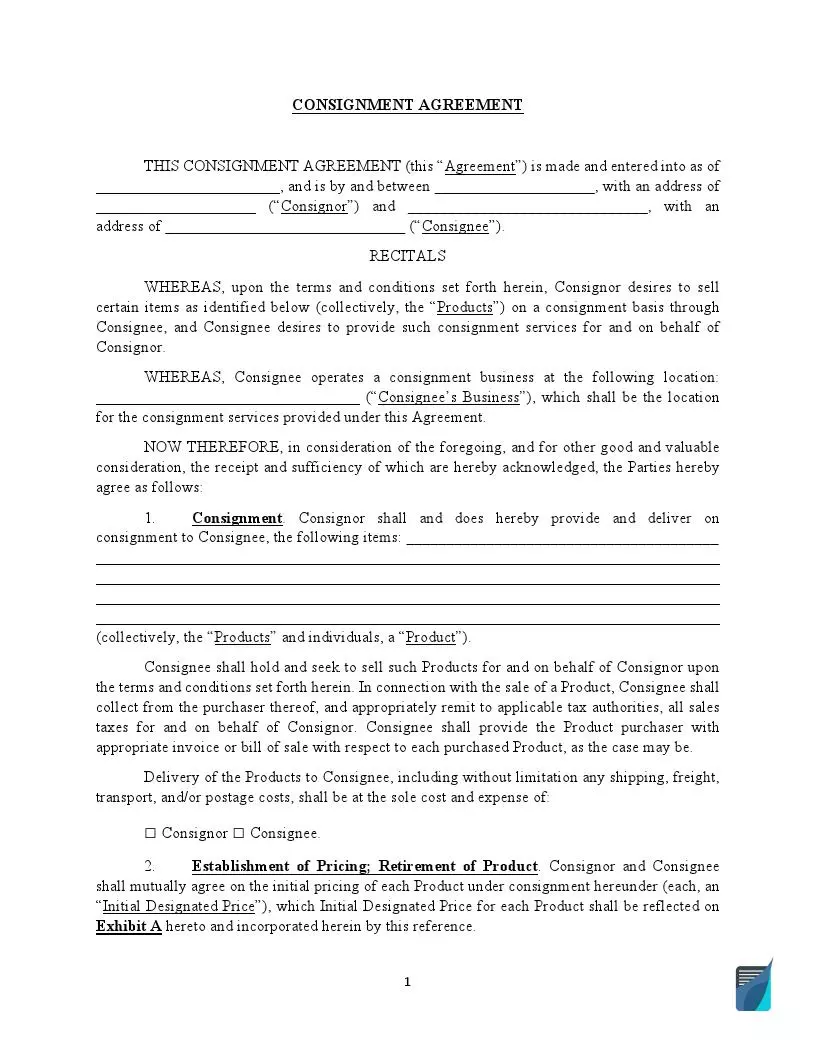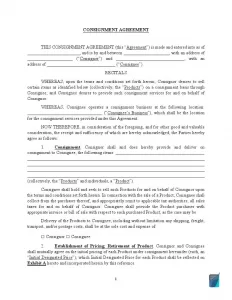
Here, we will tell you what a consignment agreement is, what information it should cover, and what benefits you will get by creating such a document.

Create a free high quality Consignment Agreement online now!
Build Your Document
Answer a few simple questions to make your document in minutes
Save progress and finish on any device, download and print anytime
Your valid, lawyer-approved document is ready
. or download your Consignment Agreement Template as a PDF file Create a free high quality Consignment Agreement online now! Type-specific Forms Table of ContentsWhen individuals or entities enter into such an agreement, they agree that the seller or manufacturer (that is, consignor) will place their commodities on consignment giving the buyer (that is, consignee) the ability to sell these goods and receive a certain commission.
The consignee agrees to keep the consignor’s goods at a facility or warehouse where the merchandise can be controlled by one of the parties in the contract or a third party. Goods belong to the consignor. The consignee doesn’t take the title and instead acts as an agent who passes the title to those items to a buyer on the consignor’s behalf.
Technically, a consignment agreement lets someone else to sell goods you own on your behalf. The consignee handles the marketing and sales and takes a certain commission for it when you are obtaining most of the sale price with minimal effort.
There are two types of agreement that allows putting merchandise on consignment:
Items that are most often consigned are clothes and household items. The main difference between a regular store that sells, for example, used clothing and a consignment store is that the first buys clothes directly from manufacturers, becoming the owner of the items, and then resells them, while the second pays manufacturers only once their items are bought.
It is also common to sell vehicles with the use of consignment agreements. For example, a used car can be placed with a dealer to be sold on consignment. The owner of a car keeps the ownership and can also sign a consignment contract with several dealers at a time letting the one who will be the first to sell the car make a deal. It is a good alternative to selling a car to a dealer as in this case, it is usually sold at a price below market value. With a consignment agreement, a vehicle can be offered at a purchase price closer to the market value. This is how the owner of a car can make more, even after paying the consignee’s fee or commission.
The consignor gets unbeatable benefits when putting their merchandise on consignment:

A basic consignment agreement includes the following information.
You can easily find a consignment agreement template on the net and use it to write your own contract. But the important thing here is that it should comply with your state laws and completely protect you.
To be confident in getting a legally binding document that will cover all the information needed, use our online document builder. It will help you get an attorney-verified form in just 5 minutes.
It depends. For example, one of the disadvantages is that once you enter into a consignment agreement, you will get money only if your items are sold from the shelves of the consignee’s facility. It means that you should have a sufficient amount of cash on hand to wait till you get profit from consignment sales.
You also don’t have a lot of control over the shelving strategy. It might lead to retailers and wholesalers placing their owned inventory in more advantageous places than yours. It is especially relevant if consignees have invested capital in the inventory, and they want to get a fast ROI if your merchandise does not sell well.
The absence of retailers’ investments in the consigner’s merchandise also leads to possible negligence regarding shopper abuse. Some consignees will be putting sales of their own merchandise in the first place, so you, not having any physical control over damages, might not be getting expected profit.
Along with that, sellers might put more effort into the promotion of their own goods.
Published: Apr 1, 2022
With over 25 years of experience as a business and transactional attorney, Jennifer has mastered the craft of closing highly successful deals for her clients. Through her wide-ranging expertise in commercial contracts, real estate transactions, M&A and corporate law, Jennifer secures results that are second-to-none.